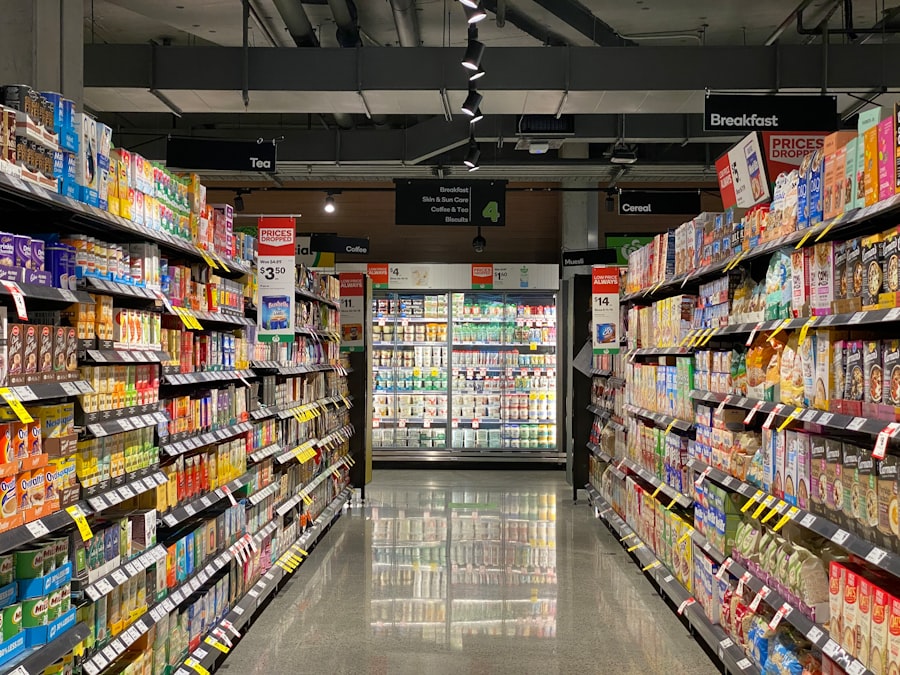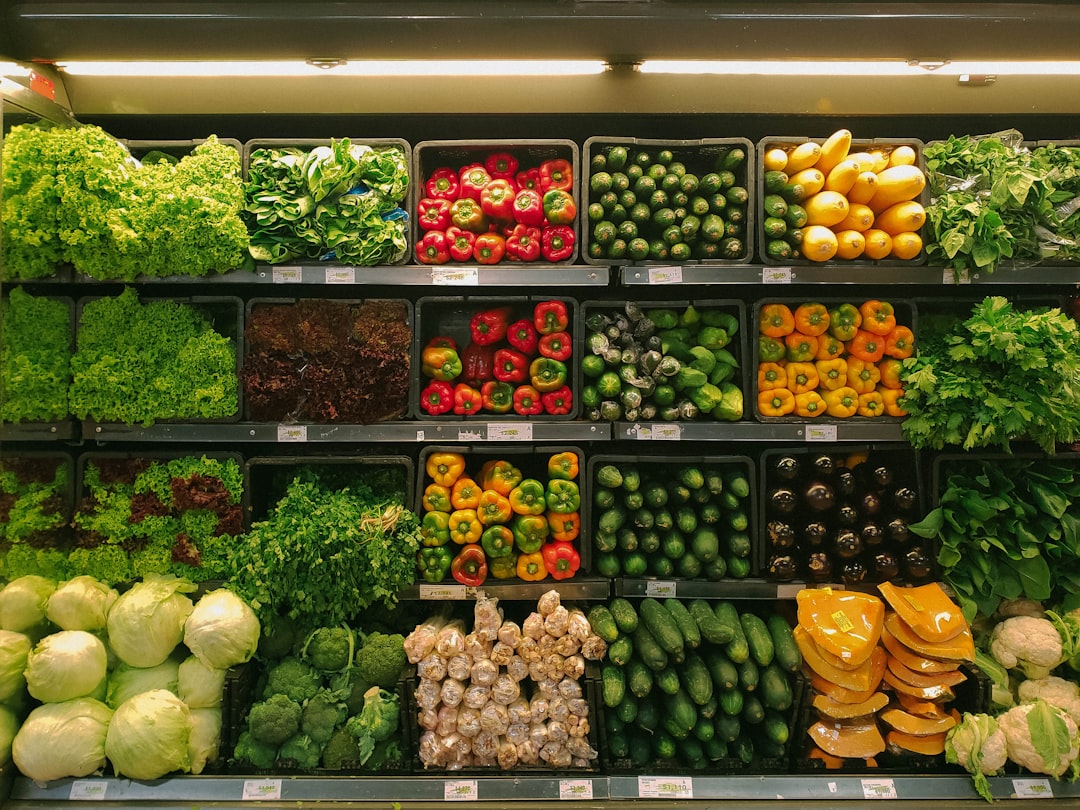In today’s fast-paced world, grocery shopping can often feel like a daunting task, especially when you’re trying to stick to a budget. However, smart shopping for groceries is not just about finding the lowest prices; it’s about making informed decisions that can lead to significant savings over time. By adopting a strategic approach, you can transform your grocery shopping experience into a more efficient and cost-effective endeavor.
This article will guide you through various techniques and tips that will help you maximize your savings while ensuring you still get the quality products you need. As you embark on your journey toward smarter grocery shopping, it’s essential to understand that this process involves more than just clipping coupons or waiting for sales. It requires a combination of planning, timing, and resourcefulness.
By familiarizing yourself with the ins and outs of grocery shopping, you can make choices that not only benefit your wallet but also enhance your overall shopping experience. Let’s delve into the various strategies that can help you become a savvy shopper.
Key Takeaways
- Smart shopping for groceries involves understanding sales cycles, utilizing coupons and loyalty programs, and taking advantage of price matching and comparison apps.
- Sales cycles and seasonal promotions can help you save money by purchasing items at their lowest prices.
- The best days of the week to shop for groceries are typically mid-week, when stores are less crowded and new sales have started.
- Utilize coupons and loyalty programs to save money on groceries, and take advantage of price matching and comparison apps to ensure you’re getting the best deal.
- Shopping in bulk and utilizing warehouse memberships can help you save money in the long run, and planning meals and creating a shopping list can prevent impulse buys and save you money.
Understanding Sales Cycles and Seasonal Promotions
One of the cornerstones of smart grocery shopping is understanding sales cycles and seasonal promotions. Grocery stores often operate on predictable sales patterns, where certain items go on sale at specific times of the year. For instance, you might notice that grilling supplies are heavily discounted during the summer months, while baking goods often see price drops around the holidays.
By keeping track of these cycles, you can plan your purchases accordingly and stock up on items when they are at their lowest prices. Additionally, seasonal promotions can provide excellent opportunities for savings. Many stores run special promotions during holidays or events, offering discounts on related products.
For example, during back-to-school season, you might find deals on lunchbox essentials or snacks. By being aware of these seasonal trends, you can take advantage of sales that align with your needs, ensuring that you’re not only saving money but also getting the most out of your grocery budget.
The Best Days of the Week to Shop for Groceries

Timing your grocery shopping can significantly impact how much you spend. Research has shown that certain days of the week are better for shopping than others. Typically, weekdays, especially Tuesday and Wednesday, tend to be less crowded and may offer better deals as stores restock their shelves after the weekend rush.
Shopping during these quieter times allows you to browse without feeling rushed and gives you a better chance to find markdowns or clearance items. Moreover, some stores have specific days when they mark down prices on perishable items like meat and produce. By knowing when these markdowns occur, you can plan your shopping trips accordingly and score fresh items at reduced prices.
This strategy not only helps you save money but also ensures that you’re purchasing high-quality products that are still within their prime.
Taking Advantage of Coupons and Loyalty Programs
| Metrics | 2019 | 2020 | 2021 |
|---|---|---|---|
| Number of Coupons Redeemed | 500,000 | 600,000 | 700,000 |
| Average Discount Percentage | 10% | 12% | 15% |
| Number of Loyalty Program Members | 100,000 | 120,000 | 150,000 |
| Redemption Rate of Loyalty Points | 70% | 75% | 80% |
Coupons have long been a staple in the world of grocery shopping, and for good reason. They provide an easy way to save money on items you already plan to buy. However, in today’s digital age, coupons have evolved beyond paper clippings.
Many stores offer digital coupons that can be loaded onto your loyalty card or app, making it easier than ever to access discounts without the hassle of carrying around physical coupons. In addition to coupons, loyalty programs can be a game-changer for your grocery budget. By signing up for a store’s loyalty program, you often gain access to exclusive discounts, personalized offers based on your shopping habits, and even points that can be redeemed for future purchases.
These programs are designed to reward frequent shoppers, so taking advantage of them can lead to substantial savings over time.
Utilizing Price Matching and Comparison Apps
In an age where technology is at your fingertips, utilizing price matching and comparison apps can elevate your grocery shopping experience. Many retailers offer price matching policies that allow you to get the best deal available. If you find a lower price at a competing store, simply show proof at checkout, and the store will match it.
This practice not only saves you money but also encourages competition among retailers to keep their prices competitive. Furthermore, comparison apps can help streamline your shopping process by allowing you to compare prices across different stores in real-time. These apps often provide information on current sales and promotions, enabling you to make informed decisions about where to shop for specific items.
By leveraging these tools, you can ensure that you’re always getting the best possible price on your groceries.
Shopping in Bulk and Utilizing Warehouse Memberships

Shopping in bulk is another effective strategy for saving money on groceries. Many warehouse clubs offer significant discounts on bulk purchases, allowing you to stock up on non-perishable items or household essentials at a fraction of the cost. While it may require an initial investment in a membership fee, the long-term savings can be substantial if you regularly purchase items in larger quantities.
However, it’s essential to be strategic about what you buy in bulk. Focus on items that have a long shelf life or products that your household uses frequently. Additionally, consider splitting bulk purchases with friends or family members to maximize savings without overwhelming your storage space.
By being mindful of your bulk purchases, you can enjoy the benefits of lower prices while minimizing waste.
Planning Meals and Creating a Shopping List
One of the most effective ways to save money while grocery shopping is by planning your meals in advance and creating a detailed shopping list. Meal planning allows you to assess what ingredients you already have at home and what you need to buy for the week ahead. This practice not only helps reduce food waste but also ensures that you’re making intentional purchases rather than impulse buys.
When creating your shopping list, categorize items based on sections of the store to streamline your shopping experience. This organization will help you avoid wandering through aisles and potentially adding unnecessary items to your cart. By sticking to your list and planning meals around sales or seasonal produce, you can maximize your savings while still enjoying delicious and nutritious meals throughout the week.
Avoiding Impulse Buys and Sticking to the List
Impulse buys can quickly derail even the most well-planned grocery budget. Those enticing displays at the checkout line or eye-catching promotions can tempt even the most disciplined shoppers. To combat this tendency, it’s crucial to remain focused on your shopping list and remind yourself of your budgetary goals as you navigate the store.
One effective strategy is to set a strict limit on how much you’re willing to spend beyond your planned purchases. If an item isn’t on your list or doesn’t fit within your budget, consider whether it’s truly necessary before adding it to your cart. By cultivating mindfulness during your shopping trips and resisting the urge to stray from your list, you’ll find it easier to stick to your budget and achieve your savings goals.
Making Use of Clearance and Manager’s Specials
Many grocery stores have clearance sections or manager’s specials where they offer discounts on items nearing their expiration dates or products that need to be sold quickly for other reasons. These sections can be goldmines for savvy shoppers looking to save money while still getting quality products. Items such as canned goods, frozen foods, or even fresh produce can often be found at significantly reduced prices.
To make the most of these opportunities, take some time to explore these sections during each shopping trip. You might discover great deals on items that fit perfectly into your meal plan or pantry staples that can be stored for later use. By being open to exploring clearance items and manager’s specials, you can stretch your grocery budget even further while still enjoying a variety of foods.
Utilizing Cashback and Rebate Apps
In addition to traditional coupons and discounts, cashback and rebate apps have gained popularity as effective tools for saving money on groceries. These apps allow you to earn cash back on specific purchases by simply uploading your receipt after shopping. Some popular cashback apps even offer bonuses for purchasing certain brands or products, providing an additional incentive to try new items.
By incorporating these apps into your grocery shopping routine, you can accumulate savings over time without much effort. It’s worth taking a few minutes before each shopping trip to check which offers are available through these apps so that you can maximize your potential savings. With consistent use, cashback apps can become a valuable part of your overall grocery budgeting strategy.
Maximizing Savings on Groceries through Smart Shopping
In conclusion, smart shopping for groceries is an art that combines planning, timing, and resourcefulness. By understanding sales cycles, utilizing coupons and loyalty programs, and taking advantage of technology like price matching apps and cashback offers, you can significantly reduce your grocery expenses without sacrificing quality or variety in your meals. As you implement these strategies into your routine, remember that consistency is key.
The more mindful and intentional you are with your grocery shopping habits, the more savings you’ll see over time. With a little effort and planning, you’ll not only enjoy delicious meals but also feel empowered by the knowledge that you’re making smart financial choices every time you step into the grocery store.
If you’re looking to maximize your savings while shopping for groceries, timing can be everything. According to experts, the best time to shop is typically early in the week, as many stores restock their shelves and offer fresh discounts. Additionally, shopping during off-peak hours can help you avoid crowds and take advantage of markdowns on perishable items. For more tips on saving money while shopping, you might find this related article on How Wealth Grows insightful. It offers a comprehensive guide on strategic shopping and budgeting techniques that can help you stretch your dollar further.
WATCH NOW! How Algorithms Quietly Bloat Your Grocery Bill; Here’s How to Fight Back
FAQs
What is the best time to shop for groceries to save money?
The best time to shop for groceries to save money is typically early in the morning or late at night. This is when many stores mark down items that are close to their expiration date or are overstocked.
Why is it better to shop for groceries early in the morning or late at night?
During these times, you are more likely to find discounted items and special deals as stores are trying to clear out inventory before restocking for the next day.
Are there specific days of the week that are better for grocery shopping to save money?
Many stores have specific days when they mark down items or offer special promotions. It’s a good idea to check with your local grocery store to find out when these days are.
What are some other tips for saving money on groceries?
In addition to shopping at the right times, you can also save money by using coupons, buying in bulk, and planning your meals ahead of time to avoid impulse purchases.
Is it possible to save money on groceries without sacrificing quality?
Yes, it is possible to save money on groceries without sacrificing quality. By being strategic about when and how you shop, as well as being mindful of your purchases, you can save money while still getting high-quality food items.
